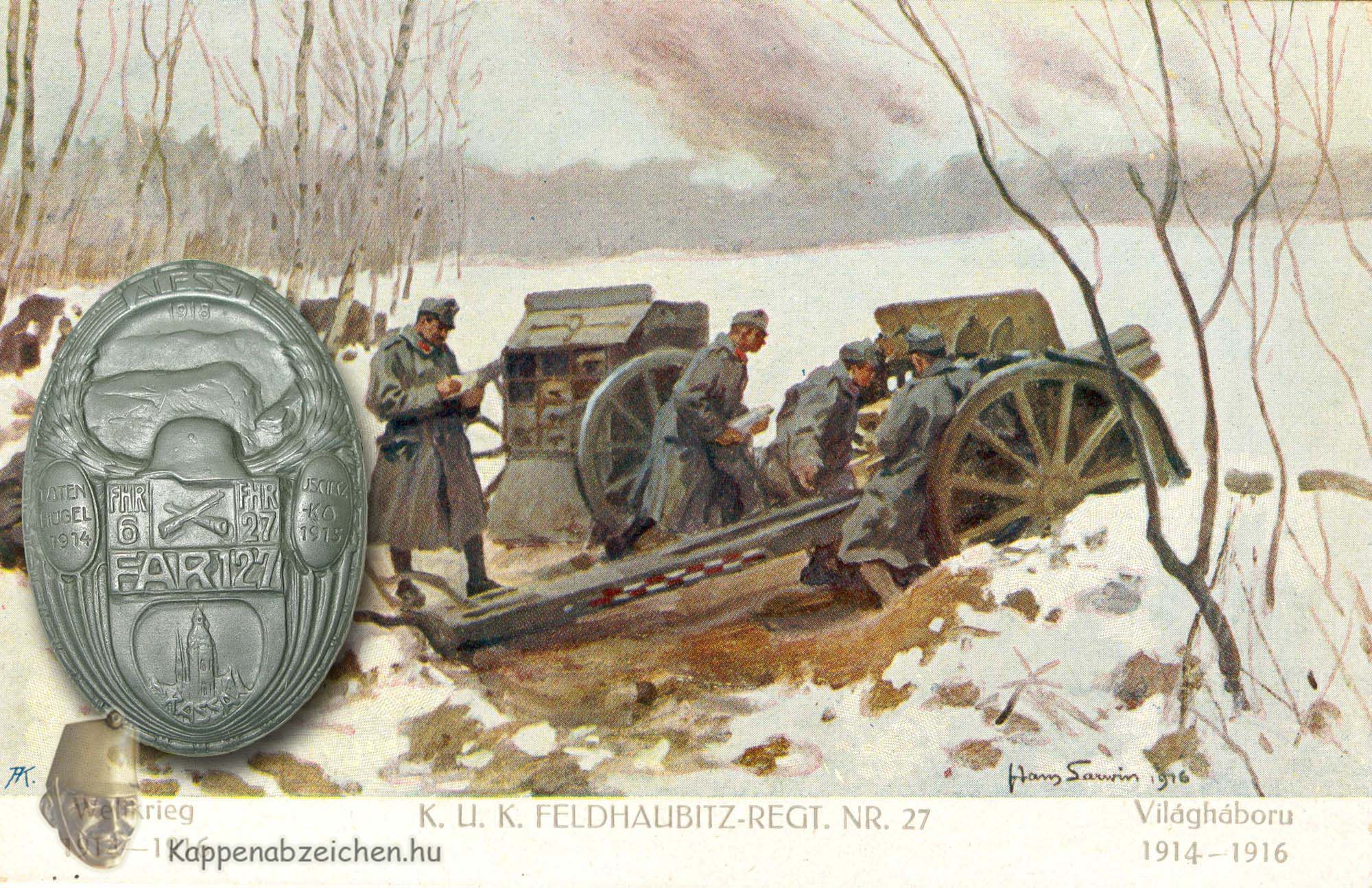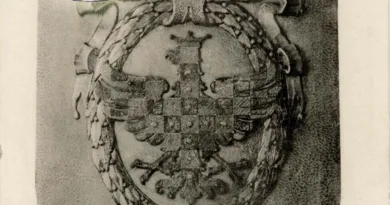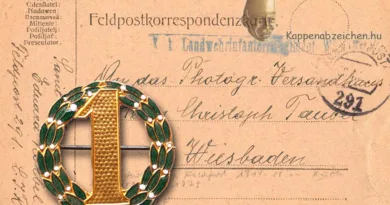FAR 127
Identifying and tracking artillery batteries in the tumult of the Great War is quite a difficult task. On the one hand, only a few of the artillery units have memorial books. The most important source of information is therefore the volume Magyar Tüzér in Hungarian. In German, the Viennese Militaria Verlag’s volume on artillery is worth highlighting. In both books, there are summary tables that show the development that took place during the Great War and try to follow the numbering that has changed several times. However, none of them provide completely correct and exhaustive information.
The badges themselves sometimes show the changes. This is the case with the insignia of the 127th Field Artillery Regiment. In fact, on a smaller scale, there is also a reference to the predecessor artillery units FHR 6 and FHR 27. FHR is the abbreviation of the German name of the field howitzer regiment (Feldhaubitzregiment). The starting point was the 6th field howitzer division and regiment that existed at the beginning of the Great War. This unit was part of the artillery brigade of the 27th Infantry Division in Kassa. The number changed in 1916, when the field artillery and field howitzer regiments assigned to artillery brigades were given the numbering of the divisions. In our case, it was number 27. At the beginning of 1918, during the major reorganization of the artillery, mixed field artillery regiments were created from the previous cannon and howitzer regiments. Half of the howitzer batteries went to the 27th Field Artillery Regiment, the rest to the 127th Field Artillery Regiment. In other words, each division had two field artillery regiments with mixed equipment from then on.

The badge not only follows the change in numbering, but also shows the starting point and the end point of the service. The image shown below on the badge depicts the Kassa Dome. Above we see the picture of the last service area of the 27th division in the mountains of Tyrol. During the 1918 Piave Offensive, the division attacked the Italians in the Brenta River Valley. The advance reached the Po plain. However, the supporting artillery could not be moved past the attacking edges through the surrounding mountains. Without artillery support, the advancing infantry regiments had to retreat. The inscription on the attached postcard shows FHR 27, i.e. the numbering of the regiment valid in 1917.




